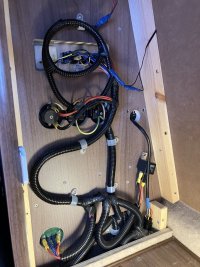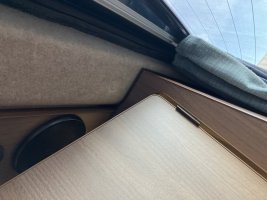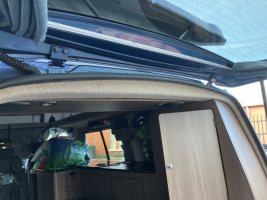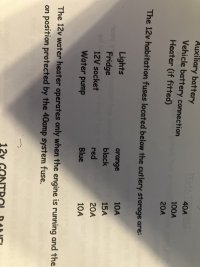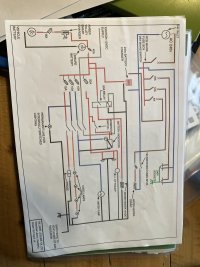The wiring diagram explains what the big relay is for then, your 12v water heater

So from the documents you'd want to tap off Fuse 4 - just keep in mind if you make a Y cable the arm that needs connect the 12v socket needs to be similar sized cable to that installed as that's fused to 20A and, theoretically, a 12v socket can handle 15A in short loads. I'd be tempted to see if a piggy back connector would fit on the back of the 12v socket connection, these type of connectors. So you'd crimp the wire to the camera into one of these (one for 12v and one for ground) take the existing wires off the socket's spade terminals, put these on the socket spade terminals and then put the existing wiring on to the spade terminal on the piggy back connector. I'd grab some connectors and do a dry run before crimping everything to make sure there is space and nothing ends up under strain.
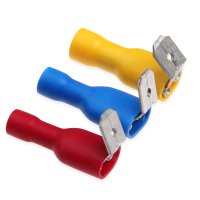
I wouldn't expect the hardwire kit to be long enough, you'd extend a 2 core wire back along the same run you are putting the camera cable in and then join it to the hardwire kit somewhere suitable up front. A set of crimped spade connectors would be an ideal join in case you change camera or the hardwire kit fails.
If space is really tight you only have to get a 12v cable in as you could use a ground point near the front if needed, just if you are pulling things and a 2 core will fit it saves you having to find a route to a ground point elsewhere, see what works best for you.
And yes any future solar install will keep the leisure battery topped up. You will see from the BM2 what the "idle" rate of charge/discharge is, you may find that solar provides enough power to keep the camera running in parking mode even in winter in which case you might decide to leave it running in case of incidents wherever you store your van - if you do that you'll probably want a larger SDCard as it might be longer than usual until you visit the van and realise you need to check the footage and most cameras loop around and record over old footage when they run out of space.

